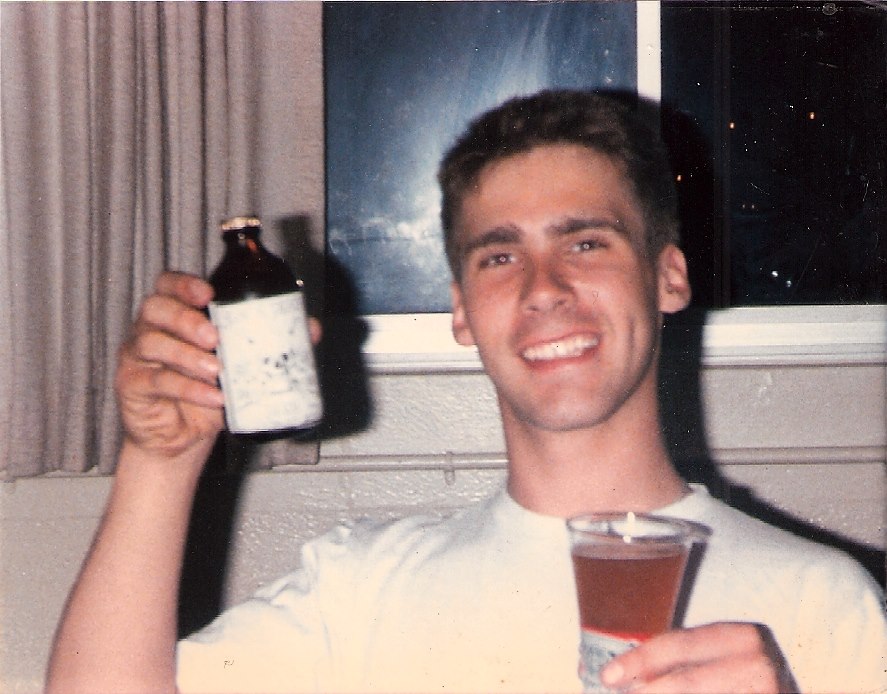The owner of the latest brewery to open amid Western North Carolina’s recent brewery surge literally wrote the book on beer.
Well, he wrote a book on beer anyway.
With the launch of Zebulon Artisan Ales in Weaverville, Mike Karnowski, author of Homebrew: Beyond the Basics, former Green Man brewer and longtime homebrewer, is excited to show the world what he’s learned during his decades of beer-making.
Zebulon Brewing doesn’t join the Vance Monument as a memorial to Zebulon Vance, the North Carolina Civil War-era governor, Karnowski is quick to point out.
“I went through 10 different names that I wanted,” he says. “Everything is taken.”
Driving home one evening he saw the sign for the Zebulon Vance birthplace and decided to reclaim the name.
“It’s a cool word,” he says. “It was inspired by seeing his name, but it was not inspired by him whatsoever.”
Zebulon will be a small-batch operation where Karnowski will bottle-condition a variety of beers to sell from the brewery and distribute to the area. There will be a small tasting room where patrons can sample 2-ounce cups of whatever is currently for sale, but there won’t be a bar where one can sit down and have a pint.
He says all of the beers will probably contain Brettanomyces — a funky yeast that can lead to unpredictable fermentations. He also has plans for several other things that “really aren’t being done,” including traveling around North Carolina to gather wild yeasts, allowing spontaneous fermentations and bringing back historical brews from hundreds of years past.
A history of beer
“I’m looking forward and seeing the future of beer and the creativity,” he says. “It just seems to be getting more and more gimmicky and just chasing trends. I think turning your back and going backwards is another way of being creative and different, but also grounded more in real beer. When I’m brewing, I like to get in the mindset reproducing what these guys were doing 150 years ago — connecting with my old brewers.
“The Aborigines have that,” he continues. “They feel like when they are hunting, they’re connected to everybody who has hunted before them. So it’s a form of immortality, where they are connected to this loop of constancy while they’re doing it. … I like that idea with brewing too. I respect the brewers from 1840 who were making IPA and pale ale and porters to ship to India. I like getting in their head and trying to think about that. I think bringing that back to this modern age is way more interesting and creative.”
The artistry of brewing
Karnowski’s journey into beer began in 1986 as a young man in the Army. He was stationed at Fort Lewis near Tacoma, Wash., and often travelled to Pike’s Place Market in Seattle to walk around and take in the sights.
“They had one of the first homebrew shops right there,” he recalls. “We went in and thought, ‘Let’s make some beer!’”

He says it turned out surprisingly decent.
Eventually, he and his wife, Gabe, opened a homebrew shop in New Orleans and ran it for 13 years, during which time he had access to all kinds of yeasts, malts and hops — and he experimented with them all. Karnowski estimates he brewed over 1,000 beers during that time.
“Imagine being a cook, and you’ve never tried any of the spices or herbs in your cabinet before,” Karnowski says. “You either have to follow somebody else’s recipe … or you have to put in the time and use each spice, one at a time, and get to know that spice. Then, in your head you can start combining them — without actually doing it, you can visualize in your head what you want.”
That’s the artistry to brewing, he says — the ability to visualize a finished beer, exactly as you want it, and break it down to just the ingredients.
“Any artist — a painter, a sculptor — they don’t just start whittling away randomly at a big block of stone,” he adds. “They remove what’s not needed to get to what’s in there. That’s kind of what good brewers are like too. They know what they want and they know how to go about getting it.”
Moving on
After Hurricane Katrina hit New Orleans, the Karnowskis decided to close up the homebrew shop and move on from a city they’d started to grow weary of.
“We were 40 years old at that point,” Karnowski recalls. “New Orleans is great when you’re 21, but once you hit 40 … what are you getting out of it?”
They eventually settled on Asheville, where Karnowski landed a job as a brewer with Green Man. While there, he started Asheville’s first sour-beer program. He brewed in small batches using a single barrel from a rum distillery he had worked at in New Orleans that he had brought to Asheville in the back of his pickup truck. That one barrel eventually grew to three barrels and morphed from there into a successful sour program.
Karnowski ultimately yearned for more freedom to experiment on a larger level than his homebrewing and small batches at Green Man could allow, and he began seriously considering his own brewery.
“He’d been talking about it for probably 20 years,” Gabe says. “We’ve been together a long time. … I was supporting him completely.”
Karnowski plans to have a few beers ready for sale by the end of the year but stresses that there’s no launch date set in stone yet.
Looking ahead
So what if it all fails? What if Karnowski is wrong, and the market isn’t there for what he plans to do?
To answer that question, he paraphrases science fiction writer J.G. Ballard’s 1981 essay, “Things I Wish I’d Known at 18.”
“They say that life is short,” Karnowski says. “But, the truth is, life is long. You’ve got plenty of time to f**k s**t up and recover. Don’t be afraid to take risks — because you can do that and fail, and it’s not a deal killer.”




If he’s trying to keep his stick less gimmicky;
He says all of their beers will probably contain Brettanomyces. Is Brett in a beer an original additive historically?? I thought it was a flaw; something brewers couldnt keep out depending on sanitation and where their brewery was located?? A brewery where all the beer has Bret in it… In Weaverville…? Sound risky; good luck :-)
Actually, the word Brettanomyces translates from latin as British (Brettano) – yeast (myces) and was considered to be THE flavor of English beers for hundreds of years. Only in the 1900s did the classic aged ales get pushed aside for fresher (a.k.a. mild) ales. The Trappist beer Orval is a classic example of what English pale ale from the 1800s tasted like.
To be historical, it doesn’t mean that a particular ingredient was ADDED historically, only that it was present. Take Gose for example. The water used in the original Goses had some slight salinity, which was not ADDED by the brewers. We brewers have to add it to create something that emulates the historical beer. It’s no different than making water adjustments to mimick profiles from other parts of the world.
Gosen. Not ‘Goses’
: ) Zwar- Gosen. First Duck.
Are you trying to say Schtick?
Cheers to Mike and Gabe! Both fantastic people and he has brewed some great beers before and we can’t imagine this venture will yield anything less. Can’t wait to try them.
At the end of the day..What works is what you want. What you have a passion for. A very perceptive friend who is so much part of the Craft Brew Industry from your area –when I told her that I felt things in the stars or planets in the universe had suddenly shifted on me and things were not happening like I wanted told me- ” It’s not what is out there ..It’s what is inside you!” If that is your passion – go with it young man! No fear- just passion driving your goals! I cannot wait to try your brews ! Love the area and wish East Tennessee had more of your ilk! Cheers!
Passion and Persistence!